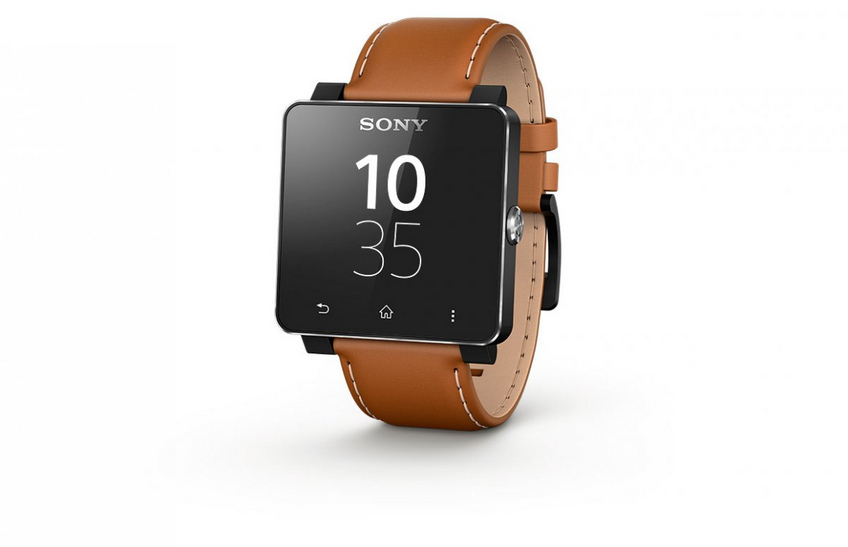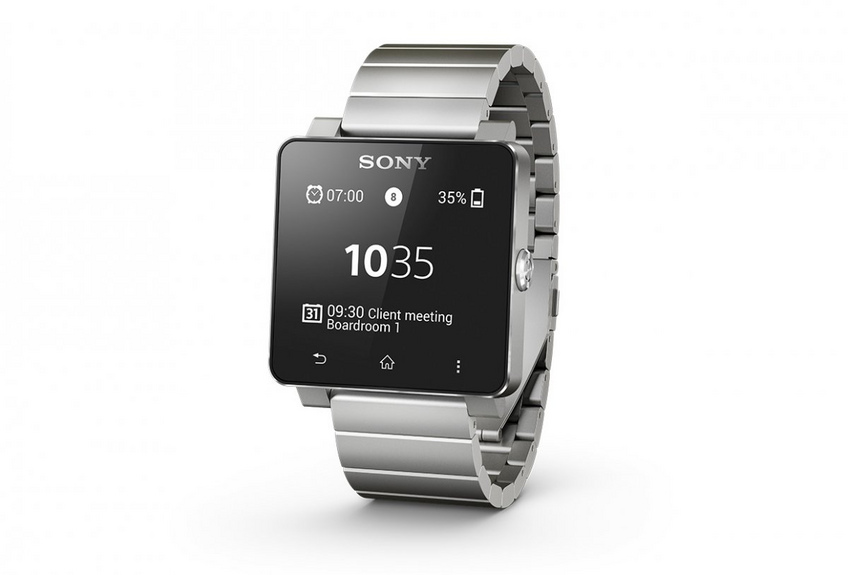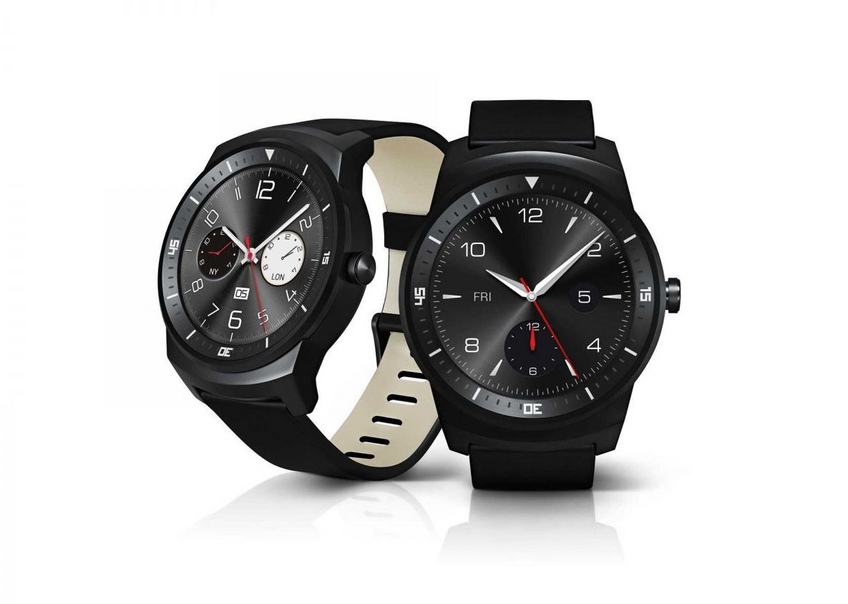

Smartwatches: building the future
This article intends to uncover a potential revolution by introducing some already-tested smartwatches available on the market.
In horology, we went from table clocks to pocket watches and on to wristwatches. Now, almost a century later, mobile phones are going through a very similar transition.
Since the early days of science fiction, characters have worn on their wrist imaginary new-generation objects in order to communicate. This very concept has been in the sights of watchmaking brands for months now. Most of them see this object as an intruder, as this new means of interacting with the environment would occupy a privileged spot that used to be exclusively reserved for watches. This is indeed something that brands never thought they would have to fight for one day.
War of the worlds
Some say that there is nothing to worry about, others state that it is nonsense to talk about another watchmaking crisis.
Ultimately, no actor of the watchmaking sector believes that there is an imminent loss of interest in good old traditional timepieces. What is sure is that the producers of the first smartwatches seriously lacked creativity when it came to communication and that they lack the proper skills to communicate with specialized journalists who seek additional information. Whilst a few geeks have been spotted wearing Samsung smartwatches in big international cities, other models definitely remained in a corner as they are complex to use and do not have an appealing design. And then there is the ever-recurring issue of the Apple smartwatch. For one year, we only had phony scoops and stolen information. Ultimately, we have nothing or, more precisely, all we have seems nonsense. Therefore, should we still believe in a watchmaking tsunami whereby traditional watches would have to cohabitate with electronic instruments that would be connected to computers or smartphones?

The parties involved
It is only fitting to remember here that it is a traditional watchmaker who designed what will one day be considered as the world’s first smartwatch. The Slyde was introduced over four years ago at the Geneva Time Exhibition (GTE) which was held at the same time as the “Salon International de la Haute Horlogerie” (SIHH). Created by Jorg Hysek (the skilful designer to whom the watchmaking universe owes some of the biggest watchmaking triumphs of the 1990s), the new creation almost went unnoticed when it was introduced. However, the general public grew more aware of it when Russian oligarchs showed an interest in it. The instrument is atypical and it features a graphic interface linked to a touch screen-dial. As a result, the watch is not technically connected to its owner’s smartphone, but to its dock, which is in turn connected to a computer that gives access to information or adjustments on a dedicated online site. Thus, the ad-hoc connected piece is basically a watch. This is almost logical as it was the idea of a watch designer. All the same, even if it was produced in a limited edition as are the most unique pieces, it is an expensive watch: over €5,000 for an electronic watch. It must be said, though, that the touch screen system that displays 3D constructions is absolutely brilliant.
It suffices to go on to “slyde.com”, pay on line and download it to see a digitalized tourbillon displayed on the watch. This is quite remarkable and you can even modify it at will as this wonder of a watch is delivered with a pack that comprises different configurations such as Roller, Tourbillon, Sport, cities of the world and so on. Furthermore, the watch also displays moon phases and it features several other subtleties such as uploading pictures of yourself, your car, your kid(s) or your conquests.
Winds of change
Seeing as Apple has declared to be out of the game and taking into account that this is a constantly moving universe, it is difficult to foresee what the smartwatch of tomorrow will be, let alone predict whether the public will take a fancy to this type of instrument. What is certain, though, is that there are two prominent design teams. On the one hand we have the traditionalists and on the other hand we find the futurists. The former include Samsung, Sony and Meta Watches, who vaguely draw their inspiration from the cases of contemporary timepieces to try to convince their clients. However, it is obvious that manufactures give more importance to functionalities over “jewelry” for these watches.
It is incidentally the lack of ingenious design that makes the actors of traditional watchmaking say that the horology universe has nothing to worry about as long as the watches released by electronic brands remain so ugly. Only God knows if they will stay that way.
Even MetaWatch, aware that the architecture of its cases needs to evolve quickly, chooses to remain on the sidelines in terms of potential consumers’ requirements. However, there is some improvement and the new generation is clearly burying the rivalry. However, as was the case in IT, things do and have to evolve quickly as their success is not granted, even if Samsung carried out some pro-active and MetaWatch some mode communication campaigns. For its part, Seiko remains in the competition with the release of the Astron. With this watch, the Japanese brand, which has been producing avant-garde watches since 1969, has recently made a breakthrough with smartwatches. Both its time-regulating mode through GPS satellites and its solar function mode are brilliant.
It’s true that this timepiece – which incidentally amazed Seiko with its high sales rates since its release – does not display the incoming calls of the phone connected to it, nor does it offer the health information of its owner or the weather conditions. However, it is highly likely that the Japanese brand is able to pull these off. It may have just not thought about it yet or thought it unnecessary, or even premature.
Current and future functions
It is certain, though, that the potential functions and the autonomy of all these communication assistants (it is the terminology that best fits this type of wrist instruments) are still too limited (see product details). However, this technology is at its early stages and even if there have recently been some attempts at creating timepieces that have integrated phones to display incoming calls (as Sony Ericsson did), they got so little attention that they were quickly forgotten. In a universe where communications technology evolves extremely fast, it is difficult for brands to choose a smartwatch that might be considered a reference unless they already have the electronic means to follow the market’s rapid evolution. A smartwatch is one thing but finding the functionalities that seduce the clientele whose requirements have increased since the advent of smartphones is an altogether different story.
Polar offers smartwatches with applications that are beneficial for our health and wellbeing. Wearing a watch that allows us to listen to our body is quite strange but not absurd, as the brand invented the Heart Rate monitor and sportsmen’s electronic coaching. This is one possible leads. However, other brands will certainly increase their range of watches to attract “geeks” and retain them as clients with truly useful applications. If we are to guess, it is quite obvious that everything is possible and that no one can speculate about the future of electronic watches, especially when new materials such as active matrix, flexible screens and nano projectors are making their debut on the market. Furthermore, said materials have a high chance of becoming the solution to the watch’s screen size issue. Then again, at a time when “Tweeting” requires 140 characters to relay useful information, is it really that important to have a big screen just to be able to watch films? Absolutely not, and tomorrow’s designers will need to find the right adjustment to meet the requirements and foresee the desires of others. Until then, traditional watchmaking still has a bright future ahead. Unless…

Foreseeing the future
There are multiple potential advantages that come with smartwatches even if, as of now, they have not yet been appreciated much. A catalyst is often needed in this scenario. That is, a particular object that is able to make the market take a new direction. In the present case, the hypothetical Apple model, which some announced would be launched at the same time as the IPhone 6, could give a boost to the market. In fact, if more than 5-6 million of these tool-watches for communication were sold the week after its launch, the consumption pattern of aficionados of technical products would be dramatically affected, as would be trend-setting consumers. Something is certain, though: this sector is attracting non-watchmaking brands. Take Dassault System for example. It has recently implemented a work cell focused on the manufacture of wireless products such as recording devices and easily accessible interfaces. A word to the wise is enough.
Sure enough, these products are like the technology that accompanies them, i.e. they are a million light years away from the main consumers of mechanical watches who are in their forties and fifties.
As long as the watch embodies one of the most powerful symbols of success, there is nothing to worry about and brands can be assured that it will continue to be sold. However, the true issue is not whether watchmaking will be overtaken by those new technologies but whether it is armed to meet the requirements of the new generation. Today’s youth is unquestionably bounded to the idea of staying in touch with their peers and they will not be able to live without their phone which they use to do lots of things, such as calling, taking selfies, sending both picture and text messages or surfing the internet just as they would on their computer.
The threat of the 1970s’ quartz crisis inevitably lurks behind the new generation of consumers whose tastes and requirements are highly different to those of their parents’. Indeed, all the ingredients are there to produce the same scenario as that of the quartz crisis. The only difference is that we are now confronted with a technology that corresponds to the requirements of current consumers.

Anticipating in order to prepare for a hypothetical future
Thus, to those who state that this technology stands no chance against the watch, we can say that today they are right and that these communication tools are not equipped to rival with traditional watches which, without buttons or joysticks, manage to give a positive image of their wearers. This is not such a bad thing as those who buy those watches do not do so to simply be able to read the time, but to give a flattering image of themselves. However, once smartwatches are improved to meet the requirements of the majority of mobile phone consumers; once they are designed properly and have decent battery duration; once they are equipped with a camera and a diode micro-projector, they will not have much competition.
Competing with traditional watchmaking
In a universe where the smartwatch has finally found its place, there would not necessarily be competition with traditional watches, as they would not have the same features. It would not be a question of discerning whether a smartwatch could be the tool for social emancipation of a generation that only knew the mechanical watch throughout its childhood.
The real issue would be to identify those who would wear a traditional watch in their daily lives versus those who would choose a smartwatch for the advantages that it could represent in terms of communication. This likely parallel of existence would inevitably make the competition emerge. A wrist will always only fit one watch and it is unlikely that average consumers would wear both a smartwatch to use and a mechanical timepiece to read time. Everyone is not Mr. Hayek, who used to regularly wear several watches on his two wrists.
Hence, in general, only one watch is worn on a wrist. Consumers would then find themselves caught in the tricky dilemma of choosing between usefulness and fun. However, this situation is still hypothetical right now, as the product that many are waiting for and have dreamt about has not yet been released.
Ten years ago, our society did not believe that being on-line 24/7 had a bright future. Today, everything is online, including daily products. Tomorrow will inevitably be the smartwatch’s turn.
Yet, it will in no way deter the mechanical watch from existing. Indeed, this watch will always have a clientele but it will in all likelihood be smaller because, similarly to many things, it is exposed to trends and consequently it is at the center of generation gaps or sometimes pays the price of changing social behavior in globalized and urbanized populations. Nevertheless, we must also acknowledge that the quartz crisis ultimately benefited traditional watchmaking which would not stand where it is today were it not for this upheaval in its history. Crises often cause revival and it would not be wrong to consider that watchmaking today – incidentally thought to have reached a threshold in production and complications – is positively using new technologies to achieve this revival. From Huygens to the quartz revolution, this constructive disturbance has happened countless times before. Watches went from being more precise to being bigger and more complicated. They also shifted from pendants to neck-chains to pockets and finally to the wrist. As mentioned above, the advent of smartwatches will only reduce the market of mechanical watches a little. This crisis will undoubtedly be immediately used to conquer a space: the wrist. Then, why not imagine that smartwatches will renew the interest in pocket watches since mobile phones will probably no more be kept there? Life is a cycle; the onus is on us to write the history that goes with it.
Polar LOOP: a smartwatch
An essential tool to measure an individual’s daily physical activity. The strap sporting a futuristic design is also able to display time that can already be read on the phone but which does not yet enable any interaction with the latter. You cannot have everything.
Functions:
- Time
- Daily steps counter
- Burnt calories counted
- Connector: Polar Flow website : https://flow.polar.com/ to gauge the quality of the individual’s sleep and the distance covered
- Smartphone and tablet application for inactivity alerts
Price: € 89, 90
Sony SmartWatch 2: pure efficiency
This Android is connected to your phone and supposedly to iOS. It interacts with and enables you to control your Sony Xperia ® smartphone when it is in your pocket.
Functions:
- Several playful and useful applications
- Takes photos by activating the camera application
- Enables to connect to a mapping with real-time movement on the screen
- Adjusts the volume of the smartphone without taking it out of the pocket
- Displays incoming calls
- Displays different applications such as the temperature, the time and physical effort
Price: approximately €180
Mykronoz Ze Bracelet
This smartwatch is compatible with all phones, smartphones, tablets and computers equipped with Bluetooth. When there is an incoming call, the smartwatch vibrates and displays the number on the OLED screen. Thanks to its integrated speaker and microphone, it is possible to answer the call form the wrist directly. This futuristic timepiece was produced in Switzerland and features several other functions.
Functions:
- Watch
- Displays incoming calls and possibility to answer directly
- Enables listening to music on the phone
- Vibration
- Hands-free calls
- Adjusts the volume of the smartphone without taking it out of the pocket
- Anti-loss alarm tone (rings if the phone is more than 10 meters away)
Price: approximately € 70
Steel Slyde Classic and Black PVD
Developed by Jorg Hysek, this technological watch displays information digitally and sports a touch screen as seen on Smartphones.
The smartwatch’s Bluetooth connection to a computer enables you to upload personal information and up to 40 photos.
The website slyde.com allows downloads of other applications that can change the appearance of the piece’s watchmaking applications.
Functions:
- Time display
- Touch screen with option to change the home screen by choosing any image
- 40 photos can potentially be downloaded via a computer
Price: approximately € 5,600









